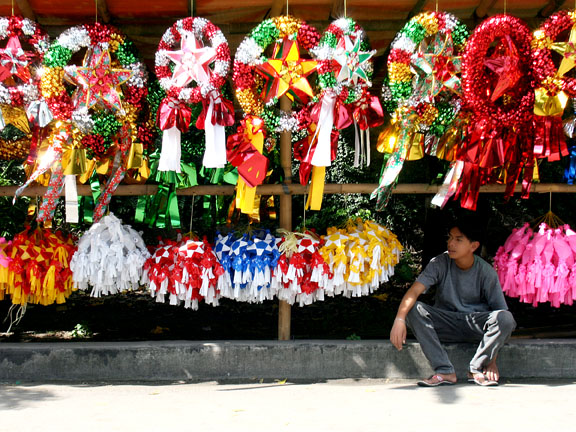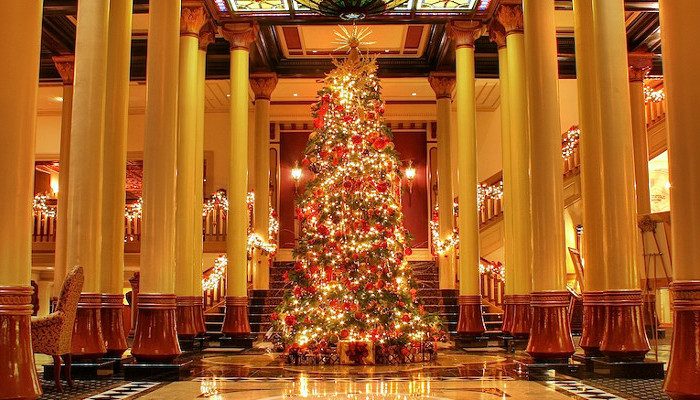Long before Christianity was established as a religion, plants and trees that remained green throughout the year, held a special meaning for people in winter. In fact, evergreen fir trees were traditionally used to celebrate winter festivals (pagan and Christian) for thousands of years. Pagans used branches from these trees to decorate their homes during the winter solstice, as it made them think of the spring to come. The Romans used fir trees to decorate their temples at the festival of Saturnalia. Christians use it as a sign of everlasting life with God. And this was the birth of the Christmas tree.
Just as people today decorate their homes during the festive season with pine, spruce, and fir trees, ancient peoples hung evergreen boughs over their doors and windows. In many countries, it was believed that evergreens would keep away witches, ghosts, evil spirits, and illness.
Christmas tree, where did you come from?
There is no documentation as to when exactly fir trees were first used as Christmas trees though it seems like this happened approximately 1000 years ago. Many early Christmas trees seem to have been hung upside down from rafters and ceilings to resemble chandeliers.
Across Northern Europe, other countries seem to have used cherry or hawthorn plants that could be grown indoors in the hopes that they would flower by Christmas time. If someone couldn’t afford a tree, they built a wooden pyramid tree which they then decorated with paper, apples and candles. These could then be taken on Christmas visits instead of just being displayed in people’s homes.
It’s possible that the wooden pyramid trees were meant to be like Paradise Trees. These were used in medieval German Mystery or Miracle Plays that were acted out in front of Churches on Christmas Eve. In early church calendars of saints, 24th December was Adam and Eve’s day. The Paradise Tree represented the Garden of Eden. It was often paraded around the town before the play started, as a way of advertising the play. The plays told Bible stories to people who could not read.
The First Christmas Tree
The first documented use of a tree at Christmas and New Year celebrations is argued between the cities of Tallinn in Estonia and Riga in Latvia! Both claim that they had the first trees; Tallinn in 1441 and Riga in 1510. Both trees were put up by the ‘Brotherhood of Blackheads’ which was an association of local unmarried merchants, ship owners, and foreigners in Livonia (what is now Estonia and Latvia).
However, Germany is credited with starting the tradition of bringing a decorated tree into the home, in the 16th century. It is a popular belief that Martin Luther, the 16th-century Protestant reformer, first added lighted candles to a tree. A story is told that one winter’s night he was walking toward his home, composing a sermon. He happened to look at the sky through the tree and was suddenly awed by the brilliance of stars twinkling amidst evergreens. To recapture the scene for his family, he erected a tree in the main room and wired its branches with lighted candles.
The Christmas tree around the world
Brazil
Although Christmas falls during the summer in Brazil, sometimes pine trees are decorated with little pieces of cotton that represent falling snow.
Ireland
Christmas trees are bought anytime in December and decorated with coloured lights, tinsel, and baubles. Some people favour the angel on top of the tree, others the star. The house is decorated with garlands, candles, holly, and ivy. Wreaths and mistletoe are hung on the door.
Philippines
Fresh pine trees are too expensive for many Filipinos, so handmade trees in an array of colours and sizes are often used. Star lanterns, or ‘parol‘, appear everywhere in December. They are made from bamboo sticks, covered with brightly coloured rice paper or cellophane, and usually, feature a tassel on each point. There is usually one in every window, each representing the Star of Bethlehem.

Image credit – http://zenforyou.dalefg.net/2011/12/christmas-in-philippines-traditional.html#.WjuZbN-WbIU
China
Of the small percentage of Chinese who do celebrate Christmas, most erect artificial trees decorated with spangles and paper chains, flowers, and lanterns. Christmas trees are called “trees of light.”
Spain
A popular Christmas custom is Catalonia, a lucky strike game. A tree trunk is filled with goodies and children hit at the trunk trying to knock out the hazelnuts, almonds, toffee, and other treats.
Information credit – WhyChristmas and History
ItsGoa/DEC/KDGP


